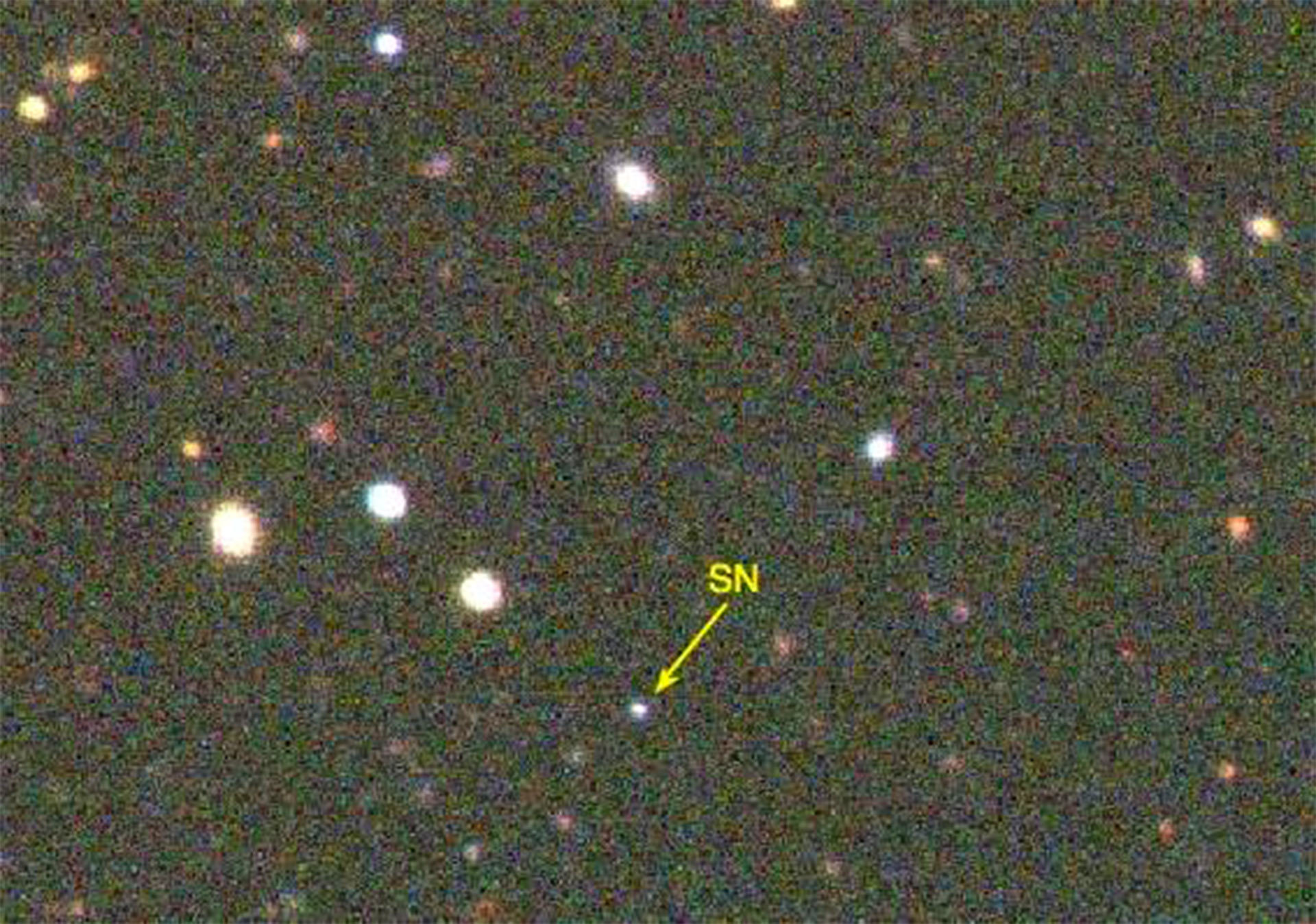
DES15E2mlf is unusual even among the small number of superluminous supernovae astronomers have detected so far.
The explosion occurred about 3.5 billion years after the Big Bang at a period known as 'cosmic high noon,' when the rate of star formation in the Universe reached its peak.
It was more than three times as bright as the 100 billion stars of our Milky Way Galaxy combined.
Previous observations of superluminous supernovae found they typically reside in low-mass or dwarf galaxies, which tend to be less enriched in metals than more massive galaxies.
The host galaxy of DES15E2mlf has a mass of 3.5 billion solar masses, which is more massive than the typical SLSN-I host galaxy.
"Supernovae are important in the evolution of galaxies because their explosions enrich the interstellar gas from which new stars form with elements heavier than helium (which astronomers call 'metals')," said Dr. Yen-Chen Pan, a postdoctoral researcher at the University of California, Santa Cruz, and a member of the Dark Energy Survey (DES) team.
"The current idea is that a low-metal environment is important in creating superluminous supernovae, and that's why they tend to occur in low mass galaxies, but DES15E2mlf is in a relatively massive galaxy compared to the typical host galaxy for superluminous supernovae."
"Stars with fewer heavy elements retain a larger fraction of their mass when they die, which may cause a bigger explosion when the star exhausts its fuel supply and collapses," said DES team member Dr. Ryan Foley, also from the University of California, Santa Cruz.
"We know metallicity affects the life of a star and how it dies, so finding this superluminous supernova in a higher-mass galaxy goes counter to current thinking," he added.
"But we are looking so far back in time, this galaxy would have had less time to create metals, so it may be that at these earlier times in the Universe's history, even high-mass galaxies had low enough metal content to create these extraordinary stellar explosions."
"At some point, the Milky Way also had these conditions and might have also produced a lot of these explosions."
DES15E2mlf was initially detected in November 2015 by the DES collaboration using the Blanco 4-m telescope at Cerro Tololo Inter-American Observatory in Chile.
Follow-up observations to measure the distance and obtain detailed spectra of the supernova were conducted with the Gemini Multi-Object Spectrograph on the 8-m Gemini South telescope.
The new observations may provide clues to the nature of stars and galaxies during peak star formation.
"Although many puzzles remain, the ability to observe these unusual supernovae at such great distances provides valuable information about the most massive stars and about an important period in the evolution of galaxies," said DES team member Dr. Matt Smith, a postdoctoral researcher at the University of Southampton, UK.
Details of the research were recently published in the Monthly Notices of the Royal Astronomical Society. The article is also publicly available at arXiv.org.



Reader Comments
to our Newsletter